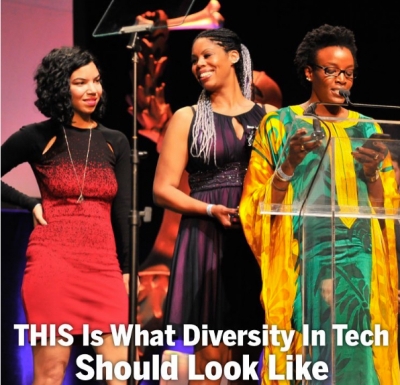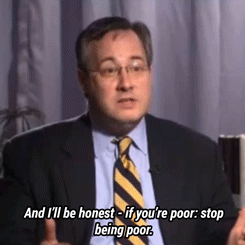Head of the Class: The Diversity Double Standard.

“Me move to Stockton, him fed him monster, I can’t live here no more. Sip holy water, turned working people into the working poor. Well I keep on knocking; I keep on knocking but I can’t get in.”
– Fantastic Negrito, The Working Poor
Every so often I have to make the trip to the belly of the beast better known as the Bay Area. It is not a trip I necessarily relish, and it’s got nothing to do with the preponderance of Giants fans, Berkeley alums or even the gratuitous use of the word “hella,” which hella sucks.
Maybe a decade ago, sure, but times is changing, and the drunks and trannies in the Tenderloin have been run out by the likes of Twitter. South of Market has gone from the middle of nowhere, or where you ended up if you got lost getting on the 101, to the center of the tech universe.
This, of course, has pushed up the price of living and created a dramatic spike in income inequality within the city of San Francisco, where the median rent for a one bedroom apartment is around $3640 a month, or approximately $40,000 a year.
Meanwhile, approximately 140,000 SF residents live in households whose combined incomes fail to exceed that $40,000 threshold every year, according to the San Francisco Human Services Association (pdf).
This represents approximately a 15% increase in these low income households over the past decade, even before adjusting for inflation and cost of living increases. Out of a city of around 830,000 people, this means almost one fifth of the households in the city couldn’t afford the rent on an average one-bedroom apartment, even if they spent their entire combined incomes on that singular expense.
This has pushed most of the working poor out of the city and into locations far from the city center, where most must work, even if they can no longer afford to live there.
In fact, the hometown of Uber and Lyft still had the third longest commute time in the entire nation, despite one of the heaviest public transportation ridership rates, but finished first in the overall number of “mega commuters,” according to the INRIX Traffic Scorecard.
This represents the class of commuters whose one way trip to or from work is longer than 50 miles and takes longer than 90 minutes. The gigantic spike in these mega commuters mirrors the widening gap in income inequality seen across the area in the last decade; in fact, a disproportionally large amount of those mega commutes are from the predominantly lower-income East Bay area (particularly from working class towns like Pittsburg and Richmond).
The same study concluded that the average income of these mega commuters fell squarely in the bottom quartile of all income earners in the six county Bay Area, with 3 in 5 coming from households making a combined income of less than the $23,000 threshold the Federal Government has set as the 2016 poverty line in the state of California.
A May 2014 paper (pdf) published by Harvard Researchers Raj Chetty and Nathaniel Hendren took a deep dive into the impact of neighborhoods on income levels and internal mobility, concluding that there’s “a significant correlation [between] measures of segregation, inequality and sprawl.” The researchers concluded the correlation between commute time and income potential was, in fact, the most strongly correlated statistical outcome of their 20 year study; in fact, those with a commute time of less than 15 minutes of the local average “increases a child’s income by 2.317 percentiles … corresponding to a more than 7% increase in income.” Those with commutes more than 30 minutes above the local average, however, made approximately 55% less than that area’s median income.
I give all this as context to say that during my visit to San Francisco last week, I was subjected to two HR conferences where, of course, diversity and inclusion were mainstays of the content and conversation.

This is not diversity.
At one of these conferences, an entire panel of well spoken, well educated women (mostly of color), shared their advice for increasing diversity in Silicon Valley, which has become such a problem that the generally passive EEOC last week published a report confirming that high tech firms lagged far behind other sectors in diversity, particularly among women and people of color.
The culprit, of course, was the demographic conveniently absent from the “diverse” voices on the panel: white men. In fact, one of the panelists, a Stanford graduate who works as a diversity consultant for some of Sand Hill Road’s hottest brands, suggested the key to actually addressing diversity was simple.
“The white man has to educate himself,” she proclaimed to applause. Another panelist predictably proclaimed that the problem was the dearth of women (less than 20%) in management or senior leadership roles at VC funded technology companies; another, the overall supply of available diverse talent in the STEM professions.
Let’s agree that there’s a pretty pervasive diversity problem among privately held high growth, high tech companies, particularly in Silicon Valley and San Francisco – in fact, the College Board reportsthat despite making up a slight majority of all undergraduate students in the US, women were about 40% less likely to major in a STEM discipline than their male counterparts.
That paltry number is still higher than the scant 18% of Hispanic and African American college grads who enter the workforce with STEM degrees. But while they’re considered a diversity group for compliance and reporting purposes, somehow, the fact is that Asian Americans, a traditionally marginalized group, were twice as likely as white students to enter a STEM discipline.

The reason for this outlier, besides such cultural factors as extended family structures and community support systems, an emphasis on educational attainment and the other “model minority” traits commonly ascribed to Asian Americans, is actually fairly obvious.
It’s the same reason that almost 45% of households in San Francisco making over 250,000 dollars a year or more also self-identify as Asian/Pacific Islander, significantly higher than the city’s overall 30% Asian population, who in aggregate make an average of $74,105 a year, compared to just $57,355 for white (non-Hispanic) workers and a national average of $53,657, according to the US Census Bureau. That’s because the key to solving diversity issues has nothing to do with our traditional (and legal) definitions of protected classes.
Diversity is, in fact, an issue that’s got much more to do with class than race or sex. The key to solving some of the most endemic issues out there, in Silicon Valley or otherwise, requires rethinking diversity from an HR initiative into an economic imperative. The answer for what diversity in Silicon Valley looks like has nothing to do with what someone looks like. The answer to inclusion involves balancing incomes, reducing commutes and exposing low income students to high tech fields from an early age.
If Silicon Valley truly cared about solving its diversity problem, it would invest in low-income housing for its hourly workforce to cut down on commute times and provide what researchers have found is the easiest way to achieve class mobility – through educational attainment. Instead of paying lip service to inclusion efforts, these companies would be wise to invest in providing the parents of their workers of the future living wages today.
Past NAACP president, current Kapor Capital partner and dude with badass name Benjamin Todd Jealous suggested in a written follow up to last week’s EEOC report, according to the Washington Post, “that companies apply a ‘distance traveled’ metric when evaluating candidates. For a young scholar from a tough neighborhood, getting in and thriving … means overcoming all sorts of adversity, and those real-life skills are enormously valuable to your company.”

The problem is, that distance the lucky few who get there must travel is almost entirely precipitated by the companies themselves.
If, as Jealous suggests, “street smarts” were of tangible business value when assessing top talent– and I’d agree with Jealous on sum – then they’d do more than wait until they entered the workforce to tap into the top diverse talent of tomorrow by providing them direction and training, instead of just a job.
US Employers spend roughly $20 billion every year on diversity and inclusion initiatives, according to Diversity Business Magazine (that such a thing even exists shows that this has moved from civil rights enforcement to corporate cash cow).
Now, imagine if they were to do away with that and reinvest it in employee salaries, training programs for diverse youth and STEM scholarships for women, who, according to the EEOC report, mostly chose to avoid those majors “because they weren’t encouraged to do so or weren’t aware of this option.” Put your money where your mouth is, and we’d not only solve for diversity, but help cure some of the most entrenched societal problems in the process.
Twenty billion is a whole lot of money to those workers struggling to get by – and by reframing diversity as a class act, we’d give the most help to the most underrepresented workforce populations today while leveling the playing field tomorrow. You can’t have inclusion when you’re exacerbating economic inequality, because limiting class mobility is inherently exclusionary. Of course, try telling that to your HR Leaders, who average well into the six figures in terms of annual income – and, one can assume, that BLS number includes “Diversity Executives,” too. Which is really too bad, considering that they’re not part of the solution – they are, in fact, pretty much the problem.
Nope, wait. That’s white dudes. We’re the worst. Even if many of us are just struggling to get by, too. Living paycheck to paycheck with no job stability, apparently, makes you part of the privileged class. Just ask any Chief Diversity Officer. They get stock options, you know. Which is straight thug, son.
Read more at HRExaminer.